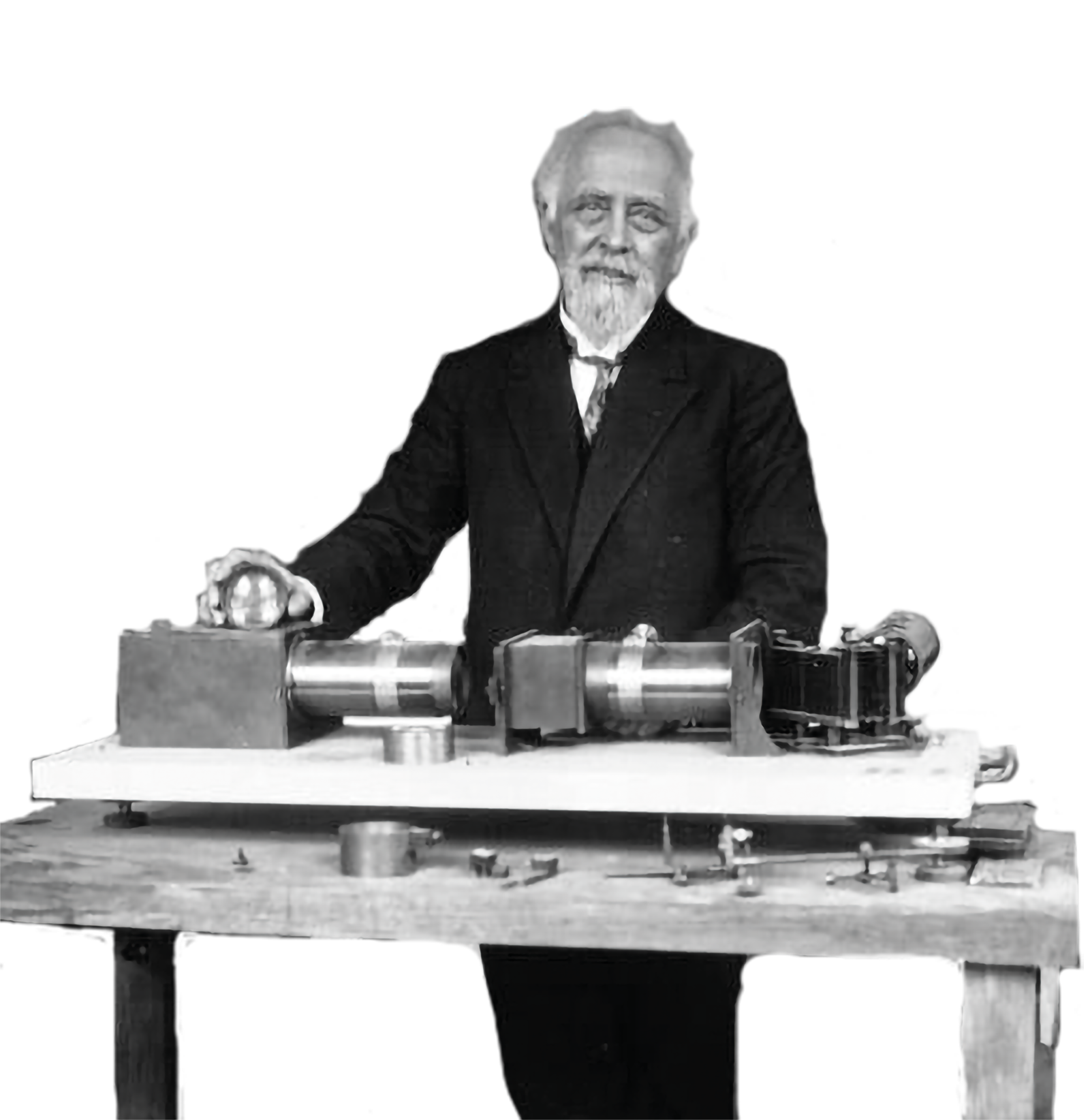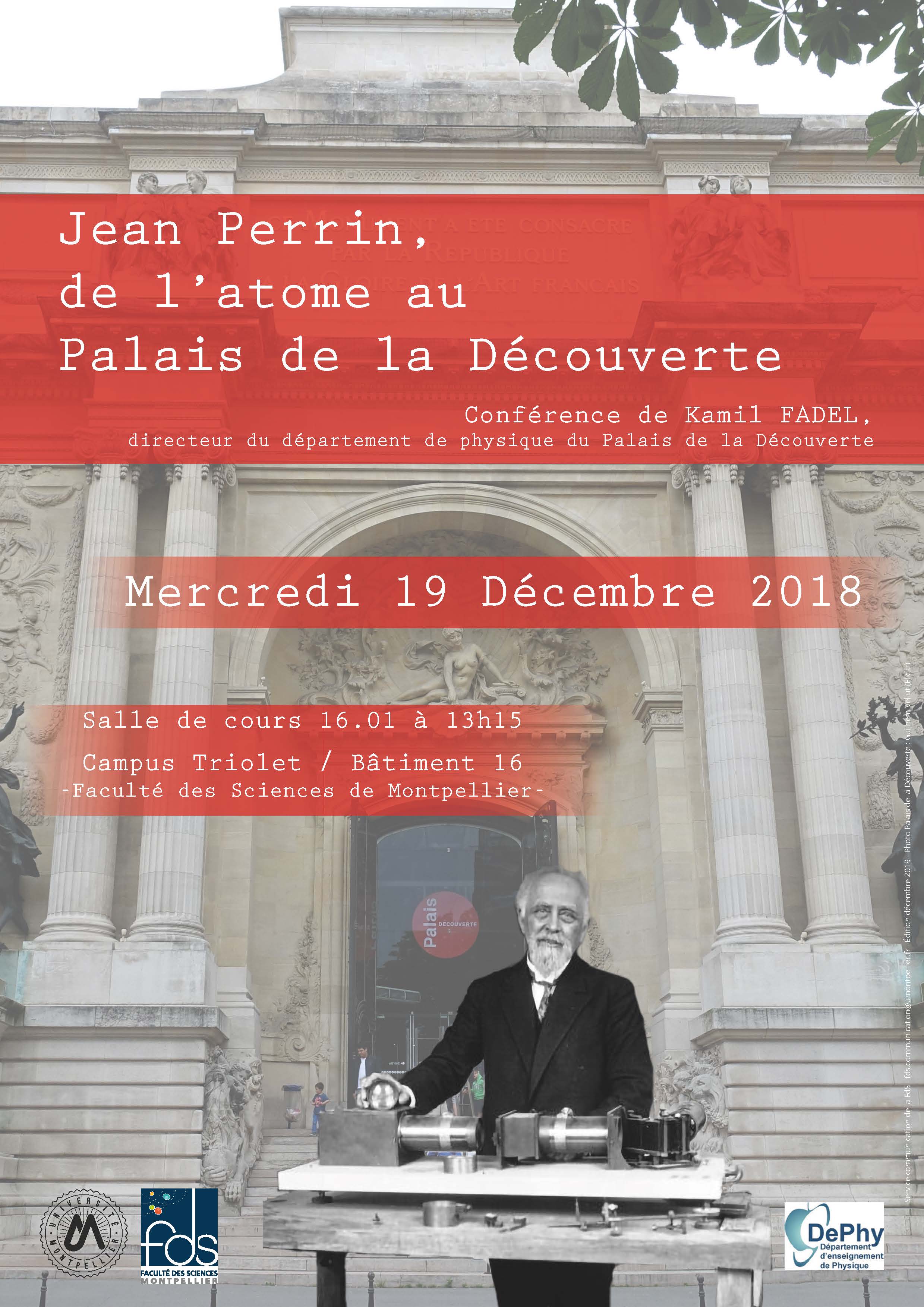December 19, 2018 - "Jean Perrin: from the atom to the Palais de la Découverte" conference
Kamil FADEL, Director of the Physics Department at the Palais de la Découverte, will present a lecture on Jean Perrin, from the atom to the Palais de la Découverte.
Wednesday, December 19, 2018
Salle de cours 16.01 à 13h15
Faculté des Sciences - Campus Triolet
Jean Baptiste Perrin (September 30, 1870 in Lille, France - April 17, 1942 in New York, USA) was a French physicist, chemist and politician. He was awarded the 1926 Nobel Prize in Physics "for his work on the discontinuity of matter, and particularly for his discovery of sedimentation equilibrium1 ".
He was awarded the 1926 Nobel Prize in Physics "for his work on the discontinuity of matter, and particularly for his discovery of sedimentation equilibrium1 ".
In 1895, Jean Perrin demonstrated that cathode rays are composed of negatively charged corpuscles.
After Albert Einstein published (1905) his theoretical explanation of Brownian motion as a function of the random motion of molecules, Jean Perrin carried out experiments to verify Einstein's predictions. In 1908, he demonstrated complete agreement between theory and experiment, confirming the actual existence of atoms, proposed a century earlier by John Dalton, and using several methods he determined a precise value for Avogadro's number.
In 1919, Perrin proposed that nuclear reactions could provide the energy source for stars. He found that the mass of one helium atom was less than that of four hydrogen atoms, and that Einstein's mass-energy equivalence implied that the energy released by the combination 4 H → He could be enough to make stars shine for billions of years. It would remain for Hans Bethe and Carl Friedrich von Weizsäcker to elucidate the detailed mechanism of the reaction during the 1930s2,3.
